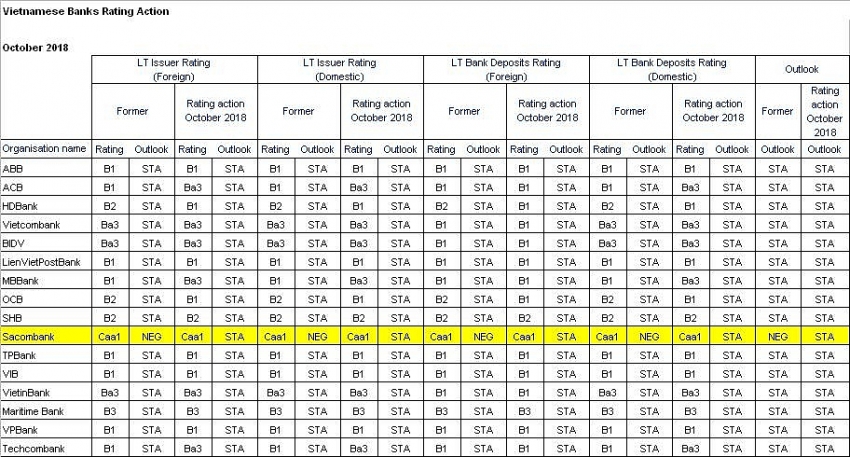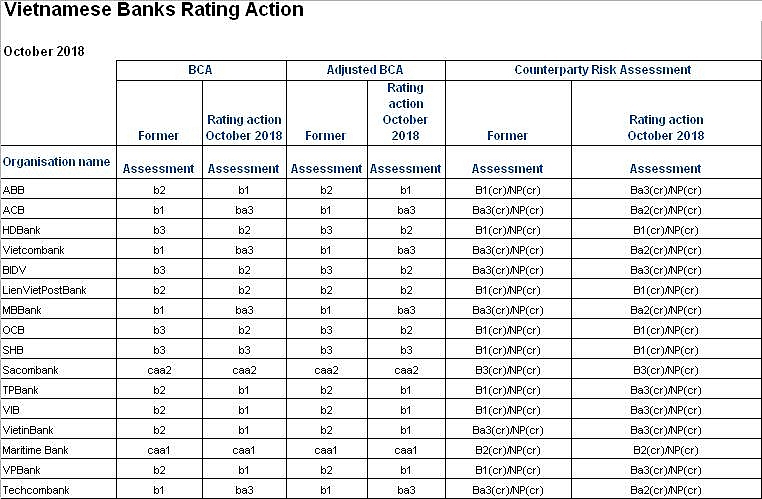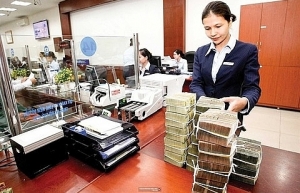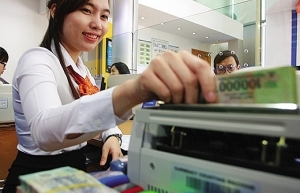Moody’s upgrades ratings on Vietnamese banks
At the same time, Moody’s has upgraded and affirmed the long-term Counterparty Risk Ratings (CRRs) and Counterparty Risk Assessments (CRAs) for some 16 local banks. The credit rating agency has also upgraded and affirmed the baseline credit assessments (BCAs) and Adjusted BCAs for the same number of banks.
The outlook on Sacombank’s ratings was changed to stable from negative, to reflect its stabilised solvency profile and progress in the recovery of problem assets.
The ratings outlooks on the other 15 rated Vietnamese banks remain stable.
 |
The rating action reflects Moody’s expectation that the strong economic growth evident in Vietnam will support the asset quality and profitability of the banks. To capture these developments, Moody’s increased Vietnam’s Macro Profile to ‘Weak+’ from ‘Weak.’
 |
The upgrade of the BCAs of 12 Vietnamese banks, according to Moody’s, is driven by the higher Macro Profile, and also by these banks’ progress in writing off legacy problem assets.
Upgrade of BIDV, Vietcombank, and VietinBank’s BCAs
The upgrade in the banks’ BCAs largely reflects improvements in asset quality. Funding and liquidity for these banks are stable, a result of their relatively lower reliance on market funds. At the same time, capital remains a weakness for all three.
Upgrade of ABB, ACB, MBBank, OCB, TPBank, VIB, and Techcombank’s BCAs
The upgrade in these banks’ BCAs reflects improvements in their standalone credit strength, particularly progress in writing off legacy problem assets, and in the case of OCB, TPBank, and Techcombank, a strengthening of their capitalisation.
Moody’s expects profitability for these seven banks to improve over the next 12-18 months as the burden of credit costs reduces.
Upgrade of VPBank’s BCA
The upgrade of VPBank’s BCA takes into account its high profitability and strong capitalisation, which offset the high credit risks from its consumer finance portfolio.
Upgrade of HDBank’s BCA
The upgrade in HDBank’s BCA reflects improvements in the bank's capitalisation and profitability. At the same time, this rating action also takes into account the impending merger between HDBank and Petrolimex Group Commercial Joint Stock Bank (PGBank, unrated), a small private sector bank in Vietnam.
Based on the two banks’ financials for 2017, the key credit metrics of the merged entity, with the exception of asset quality, will be broadly similar to that of HDBank.
Moody’s calculates the pro forma problem loan ratio of the merged entity – including loans under categories 2-5 of Vietnamese accounting standards, and gross bonds issued by Vietnam Asset Management Company (VAMC) – to be at around 6.8 per cent, while that of HDBank is 4.9 per cent.
Moody’s expects the merged entity's return on tangible assets to decline because of higher credit and operating costs. Moody’s expects funding and liquidity for the bank to remain stable.
Affirmation of Maritime Bank, Sacombank, SHB, and LienVietPostBank’s BCAs
The affirmation of MSB, SHB, and LienVietPostBank’s BCAs reflects Moody’s expectation that the banks’ credit profiles will broadly remain stable over the next 12-18 months.
The solvency of these banks is modest compared to that of other rated Vietnamese banks, but somewhat balanced by their funding and liquidity.
The BCA of Sacombank was affirmed because the bank still faces a significant risk from its problem assets, which exceeded 20 per cent of total assets as of June 30, 2018.
The adjusted BCAs of all rated Vietnamese banks are at the same level as their BCAs as Moody’s did not factor in any affiliate support for these banks.
 | Moody’s: Vietnam’s banks show diverging capital profiles The profitability of Vietnamese banks is strengthening as robust economic growth fuels credit demand and supports an improvement in asset quality, but challenges are also ... |
 | Moody's: Vietnam's credit profile reflects robust growth Moody’s Investors Service said in its latest announcement that the Vietnamese government’s B1 positive credit profile reflects the economy’s robust growth, supported by the country’s ... |
What the stars mean:
★ Poor ★ ★ Promising ★★★ Good ★★★★ Very good ★★★★★ Exceptional
Related Contents
Latest News
More News
- Ho Chi Minh City hits $8.37 billion in FDI (December 29, 2025 | 08:28)
- Tax sector wraps up 2025 and sets priorities for next year (December 25, 2025 | 14:00)
- Heavy industries set for pilot greenhouse gas quotas (December 25, 2025 | 10:00)
- $250 million deal targets women-owned SMEs, sustainable agriculture (December 22, 2025 | 17:40)
- UOB sees Vietnam growth easing in fourth quarter (December 22, 2025 | 17:39)
- Government moves to establish International Financial Centre (December 21, 2025 | 21:00)
- Vietnam's IFC to target global investment flows (December 21, 2025 | 18:00)
- Ha Tinh breaks ground on major Vingroup industrial and energy projects (December 19, 2025 | 18:24)
- EVN launches major power infrastructure projects nationwide (December 19, 2025 | 18:17)
- VAL inaugurates second production line to meet domestic animal feed demand (December 19, 2025 | 16:37)

 Tag:
Tag:





















 Mobile Version
Mobile Version